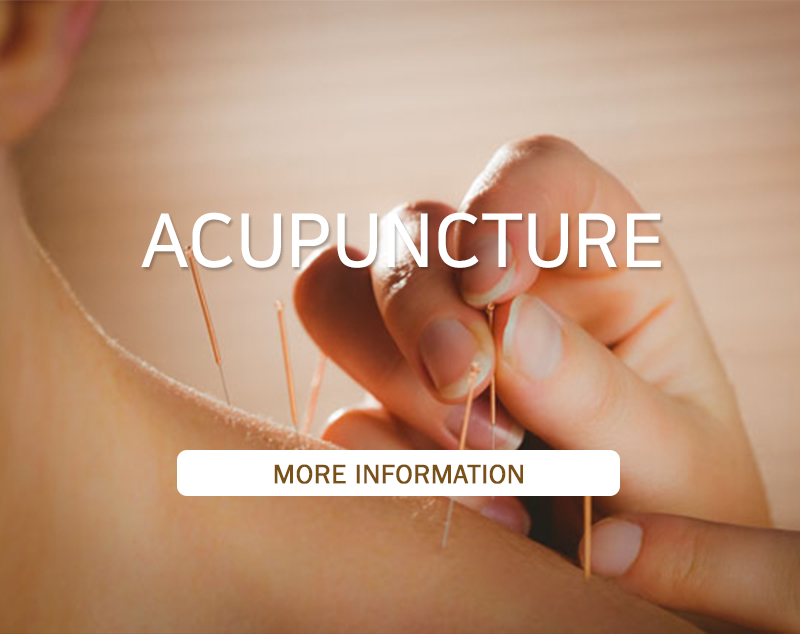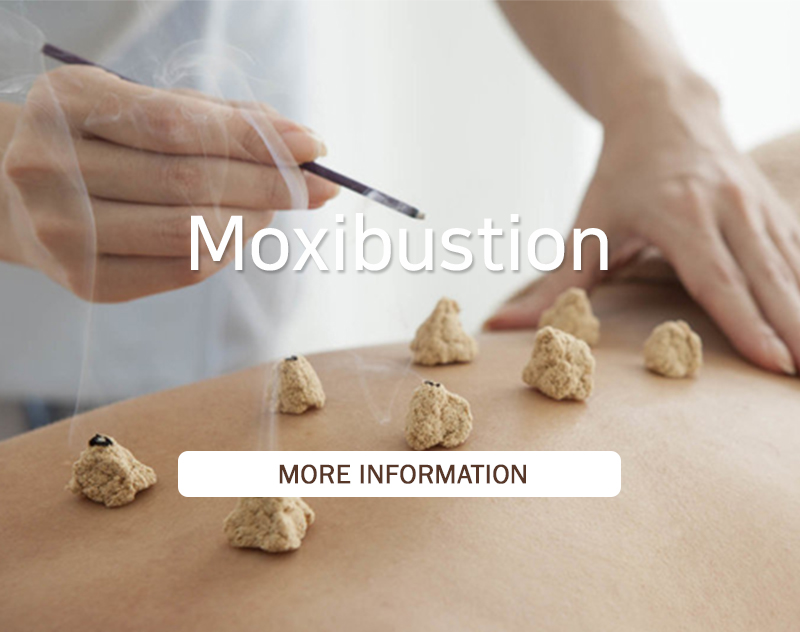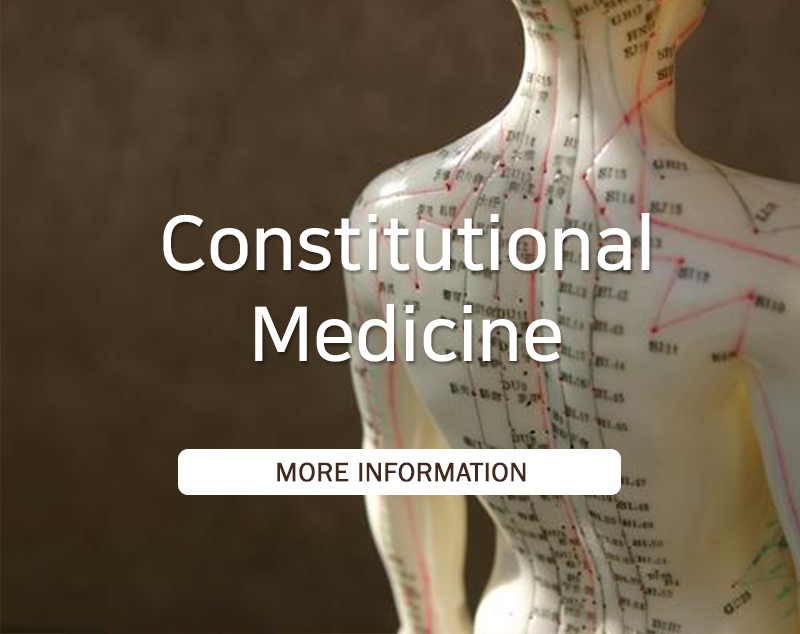Constitutional Acupuncture
Constitutional acupuncture is a form of acupuncture that is far more advanced, superior, and powerful than regular acupuncture. Many people do not know that despite the weight of its formidable history, acupuncture has made amazing new advances in the last century and continues to evolve.
One way to compare the effectiveness of regular and constitutional acupuncture is the analogy of the blind veterinarian. If you took your sick pet to a blind veterinarian, and asked him to heal it but refused to tell him the species, what could he do? If he was exceptionally skilled, he could probably still do something, but only after extensive questioning. Standard acupuncturists work this way, conducting detailed inquiries about your symptoms just to get an idea of how to approach healing the body. While detailed inquiries are certainly reassuring, there’s an easier way to get accurate information about the patient.
Returning to the vet example, what if you decided to be reasonable, and reveal to your vet that your pet was in fact a bearded dragon lizard? Wouldn’t that knowledge automatically make his treatment much more powerful and effective? This is what constitutional acupuncture is like. This advanced form of acupuncture divides people into 264 distinct “constitutions,” based on a system of strengths and weaknesses in the meridians. Constitutional acupuncturists aren’t looking for specific symptoms, but rather are trying to determine what elements of a particular body are strong or weak. Once they have this knowledge, they can treat that patient much more thoroughly and effectively. Identifying a patient’s constitution is akin to the blind vet ascertaining your pet’s species — treatment will be tailor-fit to you and will be much more effective.
What exactly does ‘constitutional’ acupuncture mean? The main idea is that each person has a specific constitution, which determines the body’s inherent strengths and weaknesses. The acupuncturist tailors his treatment to the constitutional category that the patient falls under. Once the acupuncturist knows the constitution, he also knows the patterns of symptoms for that constitution, and to which treatment the patient will respond best. This makes the treatment pre-set and simple.
Rather than having to deal with thousands of different diseases, the constitutional acupuncturist can cure all kinds of illness with one combination of treatment, diet, and herbs. This is possible because each constitution has weaknesses in different, specific sections of the natnun circuit. Though a multitude of diseases could come out of those weak points, a healthy natnun circuit can effectively combat them. The old saying, that a chain is only as strong as its weakest link, holds true. Therefore, it is important to find a constitutional acupuncturist who can find and restore the weakest link in the 14 meridian system. The result will be a whole body system that is healthier, stronger and more efficient.
The Power of Constitutional Acupuncture
Constitutional acupuncture can heal everything that classical acupuncture can, and then some. It especially rises above standard acupuncture in the area of hereditary problems. Regular acupuncture and conventional medicine are basically powerless against hereditary disease. But constitutional acupuncture proves that genes can in fact be both damaged OR repaired within one generation. For example, colorblindness, a hereditary condition thought untouchable by conventional medicine, has been corrected through constitutional acupuncture. (Details of this case history)
This form of acupuncture can be a powerful tool against diseases that have been passed down for generations within a family.
However, it is important to note that not every hereditary disease can be purged from the genes within one generation. While constitutional acupuncture can improve a genetic problem in the patient’s lifetime, it may take several generations of offspring who live healthy lifestyles before the genes are totally corrected. Nevertheless, it is possible. (For more information on the correct-ability of genes, see The Pottenger Foundation’s study of multiple generations of cats )
Choosing from 3000 Herbs
Especially when prescribing herbs, a constitutional acupuncturist will achieve much higher accuracy than one who has only classical training. Herbal formulas supplement an acupuncture treatment and reinforce the doctor’s work after you’ve left the office, and therefore are an important part of healing.
Unfortunately, acupuncturists trained only in the classical method must use a trial and error system, choosing from a possible 3000 herbs, to find the right combination for each patient. This system is inefficient and even dangerous. On average, the trial-run takes from a week to a month, which prolongs illness, retards recovery, and increases cost. More importantly, a trial-run leaves open the possibility of a patient taking an herb that is actually detrimental. The standard method is slow, inefficient, and potentially harmful.
Conversely, with training in meridian kinesiology, an acupuncturist can instantly determine whether a patient will react positively or negatively to a substance with a simple muscle test. The trained meridian kinesiologist will hold an herb up to the patient’s nose and designate a muscle to be the indicator. Immediately after the patient gets a whiff, the muscle (often an arm) will go weak or strong, indicating whether the substance will help or harm them if ingested. By smell-testing each herb the doctor finds out whether that particular substance will work on that particular body. No other prescription method can come close to providing this personal tailor fit. This method takes only a few minutes and yields a precise diagnosis. It skips over all the guesswork of classical acupuncture and prevents the patient from ingesting anything that could be harmful. The meridian kinesiology prescription is incredibly accurate, and the consequent healing process is rapid and phenomenal.
History of Constitutional Acupuncture
If it is so simple and so powerful, you may wonder, why doesn’t every acupuncturist use this method? It is because determining each patient’s constitution used to be very difficult.
Dr. Moon’s two main contributions to the field are finding 264 distinct constitutions and an easy method of diagnosis. These discoveries are the most recent advance in the field of constitutional acupuncture, which has been around for 100 years.
Dr. Jema Lee, an herbalist in Korea, first established the system of constitutions in the early 1900’s. He divided the human system into 4 constitutions by observing different characteristics in his patients. Even if his patients came to him with the same symptoms, he would give them different combinations of herbs, based on their constitutions. This healing method brought Dr. Lee much success and fame.
Building on Dr. Lee’s work, in 1965 Dr. Dowon Kwon developed 8 constitutions in his acupuncture practice. A few years later, in 1978, Dr. Tae Hwan Yom established a system of 24 constitutions. Both Drs. Kwon and Yom used a complicated system of reading pulse patterns to determine each constitution. Although both doctors’ systems made great improvements in constitutional acupuncture, the practice did not become popular because it was very difficult to read the pulses accurately.




